Serving 431 students in grades Prekindergarten-5, Arctic Light Elementary School ranks in the bottom 50% of all schools in Alaska for overall test scores (math proficiency is bottom 50%, and reading proficiency is bottom 50%).
The percentage of students achieving proficiency in math is 20% (which is lower than the Alaska state average of 23%). The percentage of students achieving proficiency in reading/language arts is 28% (which is lower than the Alaska state average of 29%).
The student:teacher ratio of 21:1 is higher than the Alaska state level of 15:1.
Minority enrollment is 57% of the student body (majority Hispanic), which is higher than the Alaska state average of 53% (majority American Indian and Hispanic).
Quick Stats (2025)
- Grades: Prekindergarten-5
- Enrollment: 431 students
- Student:Teacher Ratio: 21:1
- Minority Enrollment: 57%
- Overall Testing Rank: Bottom 50% in AK
- Math Proficiency: 20% (Btm 50%)
- Reading Proficiency: 28% (Btm 50%)
- Science Proficiency: 60-69% (Top 10%)
- Source: National Center for Education Statistics (NCES), AK Dept. of Education
Top Rankings
Arctic Light Elementary School ranks among the top 20% of public schools in Alaska for:
Category
Attribute
Science Proficiency
Diversity
School Overview
Arctic Light Elementary School's student population of 431 students has stayed relatively flat over five school years.
The teacher population of 21 teachers has declined by 25% over five school years.
Grades Offered
Grades Prekindergarten-5
(offers virtual instruction)
(offers virtual instruction)
Total Students
431 students

Gender %
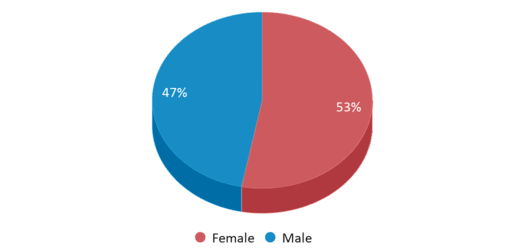
Total Classroom Teachers
21 teachers

Students by Grade
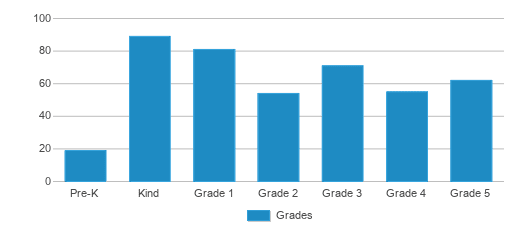
School Calendar
School Rankings
Arctic Light Elementary School ranks within the bottom 50% of all 459 schools in Alaska (based off of combined math and reading proficiency testing data).
The diversity score of Arctic Light Elementary School is 0.72, which is more than the diversity score at state average of 0.71. The school's diversity has stayed relatively flat over five school years.
Overall Testing Rank
#246 out of 459 schools
(Bottom 50%)
(Bottom 50%)

Math Test Scores (% Proficient)
20%
23%

Reading/Language Arts Test Scores (% Proficient)
28%
29%

Science Test Scores (% Proficient)
60-69%
38%
Student : Teacher Ratio
21:1
15:1

American Indian
1%
22%
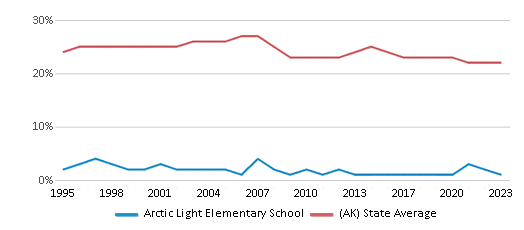
Asian
2%
5%

Hispanic
28%
8%

Black
11%
2%

White
43%
47%

Hawaiian
6%
3%

Two or more races
9%
13%

All Ethnic Groups


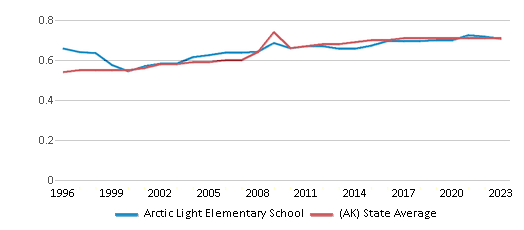
Participates in the National School Lunch Program (NSLP)
Yes
Eligible for Free Lunch
34%
37%

Eligible for Reduced Lunch
16%
3%
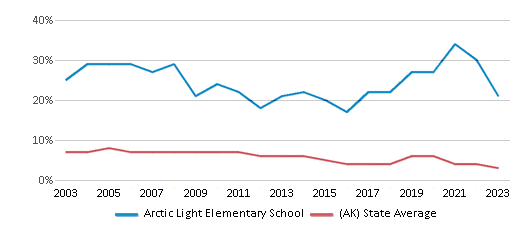
School Statewide Testing
School District Name
Source: National Center for Education Statistics (NCES), AK Dept. of Education
Profile last updated: 02/09/2025
Frequently Asked Questions
What is Arctic Light Elementary School's ranking?
Arctic Light Elementary School is ranked #246 out of 459 schools, which ranks it among the bottom 50% of public schools in Alaska.
What schools are Arctic Light Elementary School often compared to?
Arctic Light Elementary Schoolis often viewed alongside schools like Hunter Elementary School, Ladd Elementary School by visitors of our site.
What percent of students have achieved state testing proficiency in math and reading?
20% of students have achieved math proficiency (compared to the 23% AK state average), while 28% of students have achieved reading proficiency (compared to the 29% AK state average).
How many students attend Arctic Light Elementary School?
431 students attend Arctic Light Elementary School.
What is the racial composition of the student body?
43% of Arctic Light Elementary School students are White, 28% of students are Hispanic, 11% of students are Black, 9% of students are Two or more races, 6% of students are Hawaiian, 2% of students are Asian, and 1% of students are American Indian.
What is the student:teacher ratio of Arctic Light Elementary School?
Arctic Light Elementary School has a student ration of 21:1, which is higher than the Alaska state average of 15:1.
What grades does Arctic Light Elementary School offer ?
Arctic Light Elementary School offers enrollment in grades Prekindergarten-5 (offers virtual instruction).
What school district is Arctic Light Elementary School part of?
Arctic Light Elementary School is part of Fairbanks North Star Borough School District.
School Reviews
5 10/20/2015
I would recomend this school, because in 2011, I went there for 4 years, and those years held the best memories of my life. The teachers are very sweet and kind. They have really good resources, and I was supplied with everything, including information about what goes on there. I myself am very close with many of the teachers, and my only true friends were there, alongside me. I love the big open reccess yards, and the teachers would always help me if I was in trouble or had problems with schoolwork. I say yes to recommending this amazing, awe- inspiring school!
Review Arctic Light Elementary School. Reviews should be a few sentences in length. Please include any comments on:
- Quality of academic programs, teachers, and facilities
- Availability of music, art, sports and other extracurricular activities
Recent Articles

What Is A Charter School?
Explore the world of charter schools in this comprehensive guide. Learn about their history, how they operate, and the pros and cons of this educational innovation. Discover key facts about charter schools, including admission policies, demographics, and funding, as well as what to look for when considering a charter school for your child.

10 Reasons Why High School Sports Benefit Students
Discover the 10 compelling reasons why high school sports are beneficial for students. This comprehensive article explores how athletics enhance academic performance, foster personal growth, and develop crucial life skills. From improved fitness and time management to leadership development and community representation, learn why participating in high school sports can be a game-changer for students' overall success and well-being.

February 05, 2025
Understanding the U.S. Department of Education: Structure, Impact, and EvolutionWe explore how the Department of Education shapes American education, from its cabinet-level leadership to its impact on millions of students, written for general audiences seeking clarity on this vital institution.






